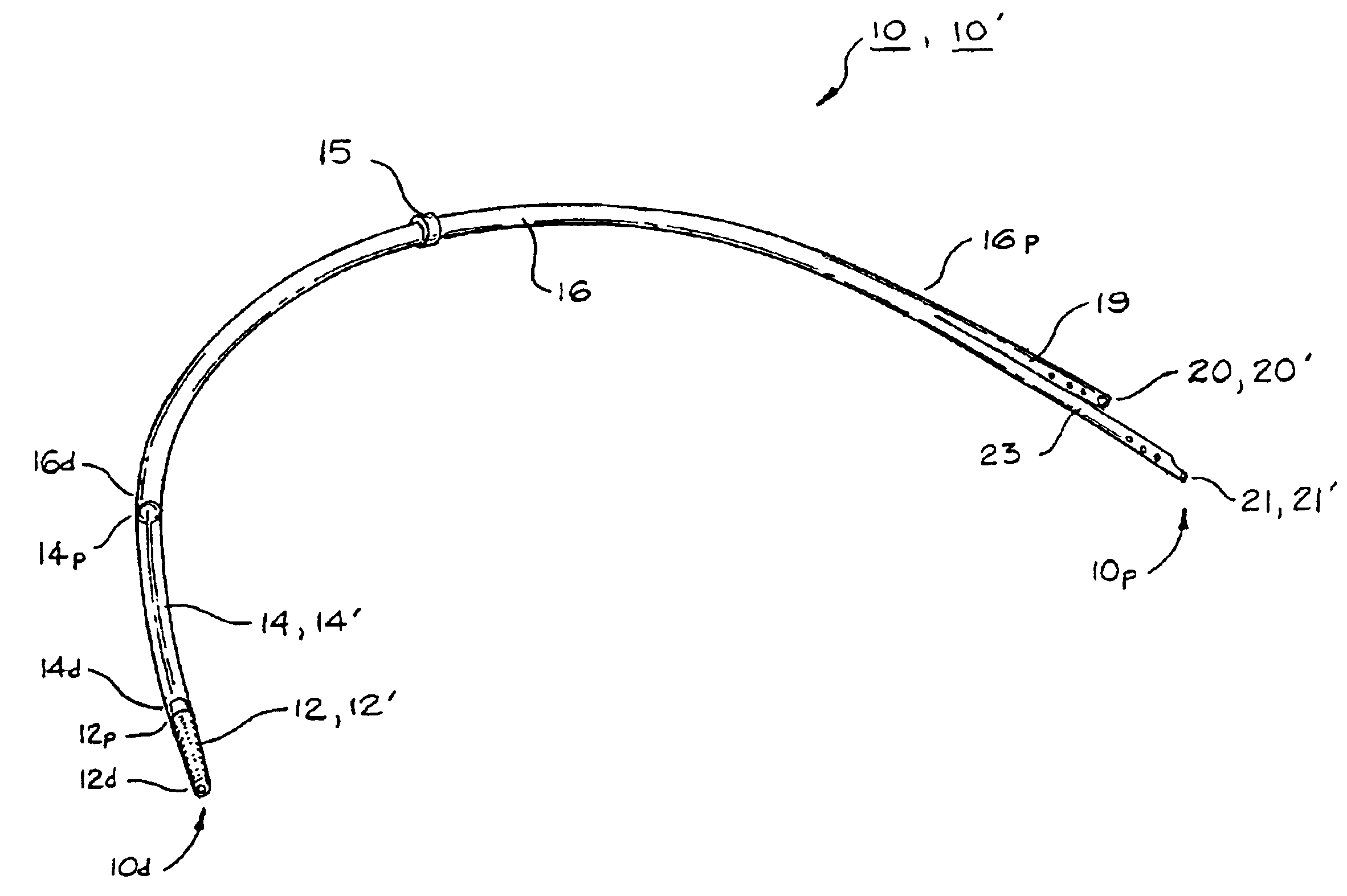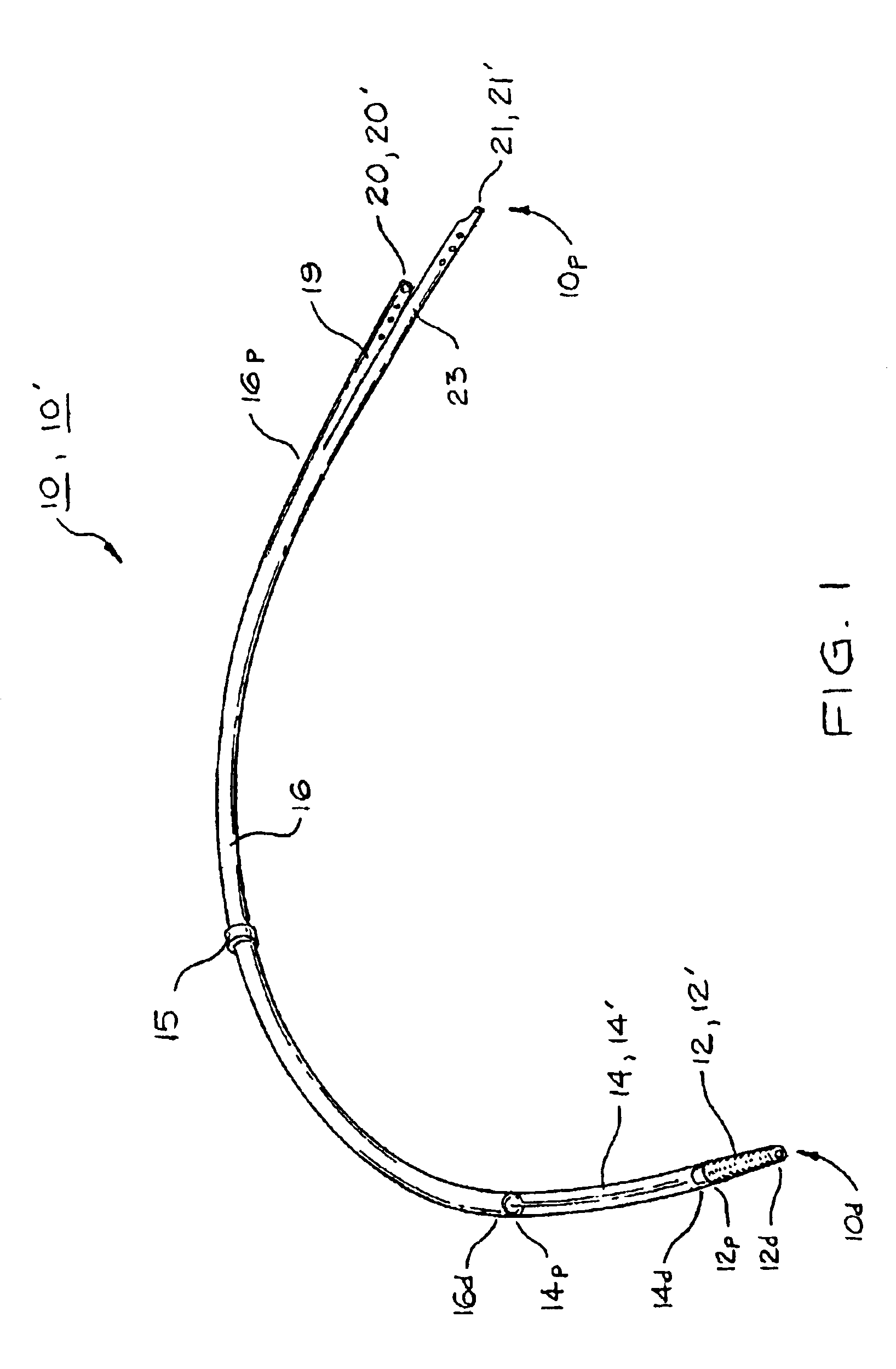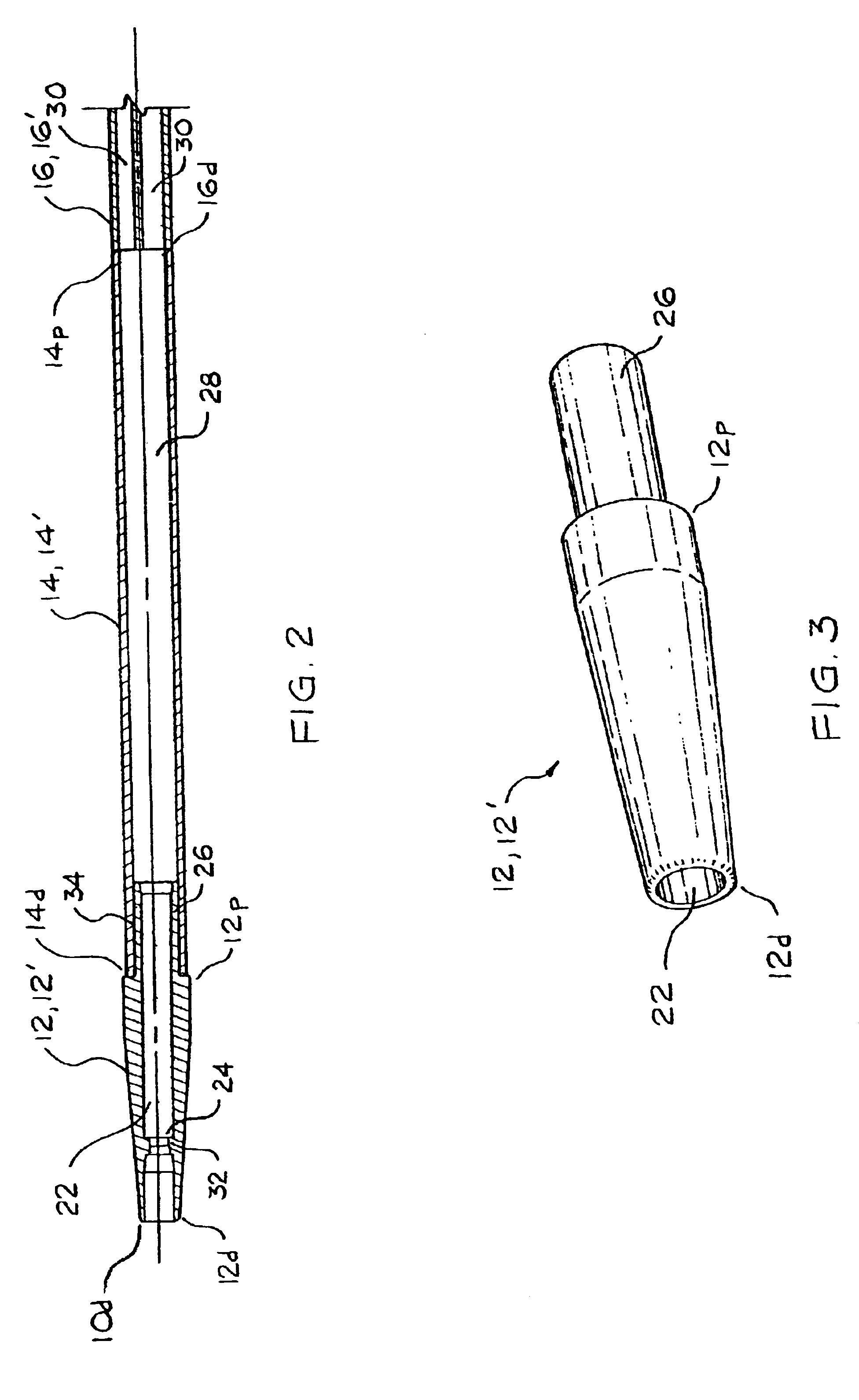Multi-lumen catheter with integrated connector
a multi-lumen catheter and connector technology, applied in the field of medical instruments, can solve the problems of affecting the operation of the catheter, presenting certain deficiencies, and the optimal placement of the catheter tip of the double-lumen catheter, and achieve the effect of facilitating uninterrupted catheter passag
- Summary
- Abstract
- Description
- Claims
- Application Information
AI Technical Summary
Benefits of technology
Problems solved by technology
Method used
Image
Examples
embodiment 12
[0050]In order to permit simultaneous flushing of the multiple lumens 430, longitudinal passages 440, 442 may be provided through each of the prongs as shown in FIG. 13. Each of the passages 440, 442 is in fluid communication with a longitudinal cavity 422 in the distal end 412d of the connector 412. In this arrangement, a plurality of substantially parallel flow-paths are defined through the connector 412 from its distal end 412d to the adjoining lumens 430 in the catheter tube 416. The distal end 412d of the connector 412 may be substantially the same as the embodiment 12 of the connector as described above and shown in FIGS. 2, 3, and 6-8. For example, as shown in FIG. 13, the connector 412 may include a circumferential collar 432 in its cavity 422 for mating engagement with a trocar 40 as described above.
embodiment 10
[0051]When the multi-lumen catheter tube 416 includes two lumens 430, the lumens 430, prongs 426, 427, and passages 440, 442 may have corresponding substantially D-shaped cross sections as shown in FIG. 15. In this arrangement, the D-shaped lumens 430 are separated by a divider wall or septum 460 which is received in a slot 470 between the D-shaped prongs 426, 427. A catheter 10, 410 like that described above can be used in an improved method of inserting a multiple-lumen catheter into a patient. One embodiment of such a method is sequentially illustrated in FIGS. 9A-9D. While the method is described in terms of inserting embodiment 10 of the catheter as described in detail above, the improved method can also be used for inserting alternate embodiment 410 of the multi-lumen catheter or any other similarly constructed catheter having an integrated connector on its distal end. As shown in FIG. 9A, the proximal tips 20, 21 of the catheter 10 are accurately placed in a patient's blood v...
PUM
 Login to View More
Login to View More Abstract
Description
Claims
Application Information
 Login to View More
Login to View More - R&D
- Intellectual Property
- Life Sciences
- Materials
- Tech Scout
- Unparalleled Data Quality
- Higher Quality Content
- 60% Fewer Hallucinations
Browse by: Latest US Patents, China's latest patents, Technical Efficacy Thesaurus, Application Domain, Technology Topic, Popular Technical Reports.
© 2025 PatSnap. All rights reserved.Legal|Privacy policy|Modern Slavery Act Transparency Statement|Sitemap|About US| Contact US: help@patsnap.com



